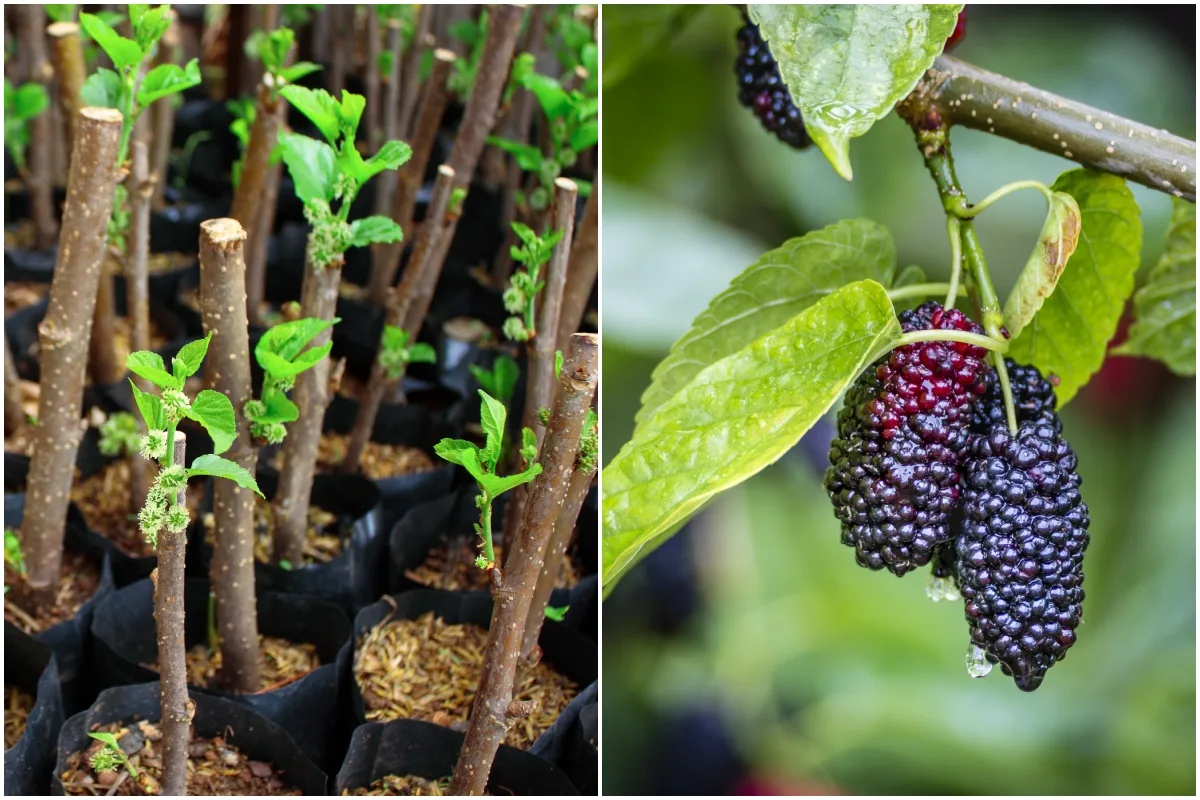
Did you know there are people out there who hate mulberries? I know a few, and I’m sure you do too. Personally, I love mulberries, and by the end of this article, you’ll have several reasons to reconsider and share your stance too.
Numbers can be deceiving, but apparently, there are many mulberry haters based on how many articles come up in a quick search.
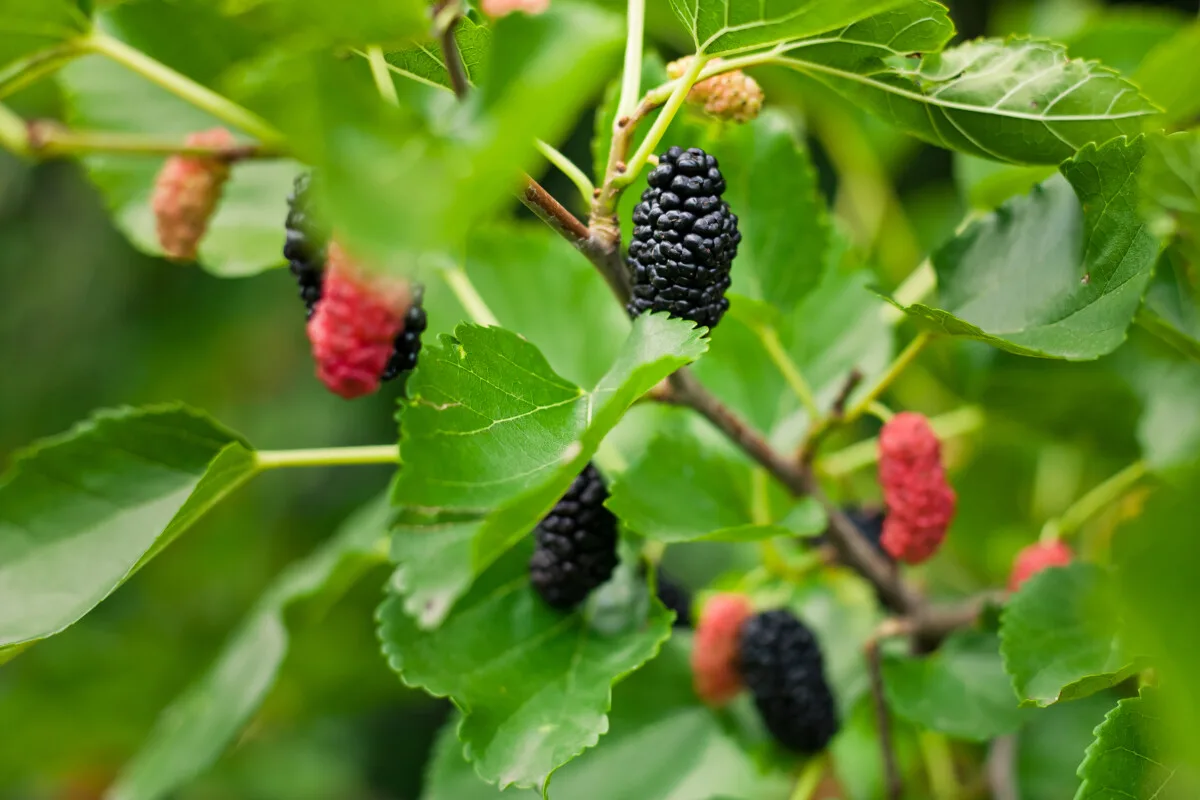
Why all the mulberry loathing?
For starters, mulberries are considered messy trees when the fruit is at its ripest. Not only do they fall directly on the ground (from 40′ above), creating a squishy mess to walk on and hopefully not bring in the house, but they also splosh on the car window (or birds eat them and, well, you know the end result…), mulberries can also stain concrete.
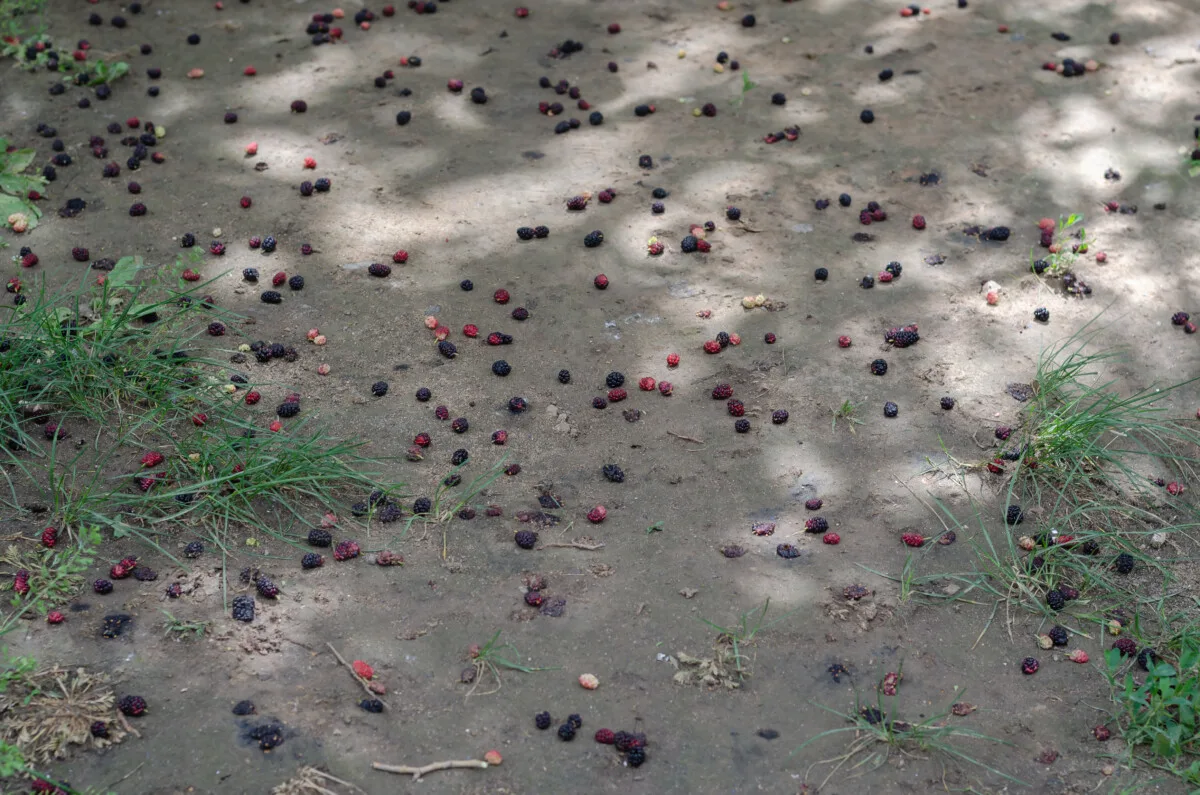
Perhaps it’s our own misunderstanding of the mulberry that leads us to not wanting them in the landscape. This “problem” can easily be rectified by planting the mulberry in the right place and honoring its right to exist among the numerous other backyard plants – assuming you have a large yard, that is.
See, mulberries are a great survival food, not just for birds but for humans too. If you’ve never had the chance to eat them, you’re in for a real treat. All you have to do is plant your own tree.
Not next to the driveway, definitely not alongside the house. Once you find the perfect location for that new mulberry tree of yours, you’ll discover many benefits for decades to come.
Benefits to Planting Mulberry Trees
If you’re on the fence about whether or not to add a mulberry tree to your property, let’s look at a handful of reasons to appreciate them. In the end, you’ll have more information to make your decision.
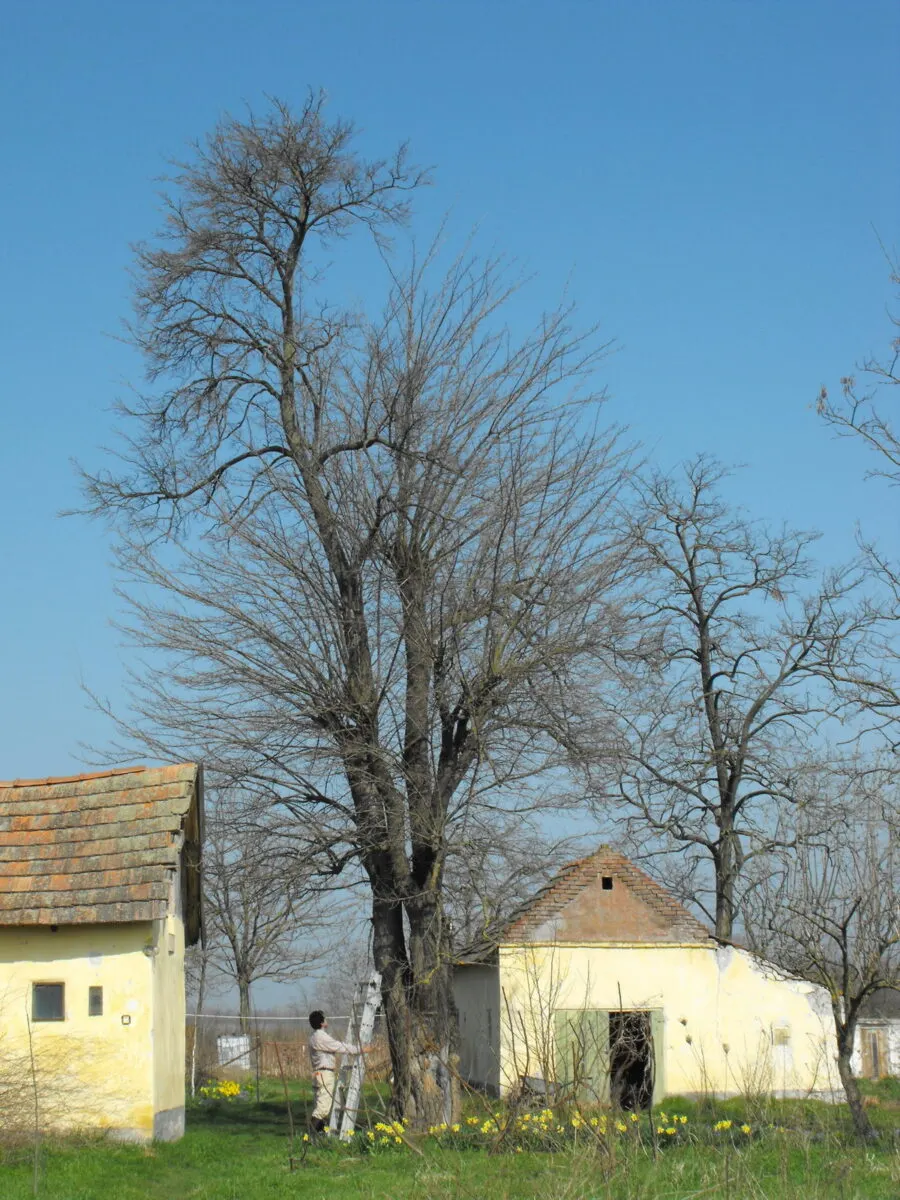
Naturally, you’ll have to consider if you have enough space in your yard to grow one or more, as mulberries can grow quite tall. We’ll get to the recommended growing conditions right after their berry-bursting benefits.
1. Mulberries are fast-growing trees.
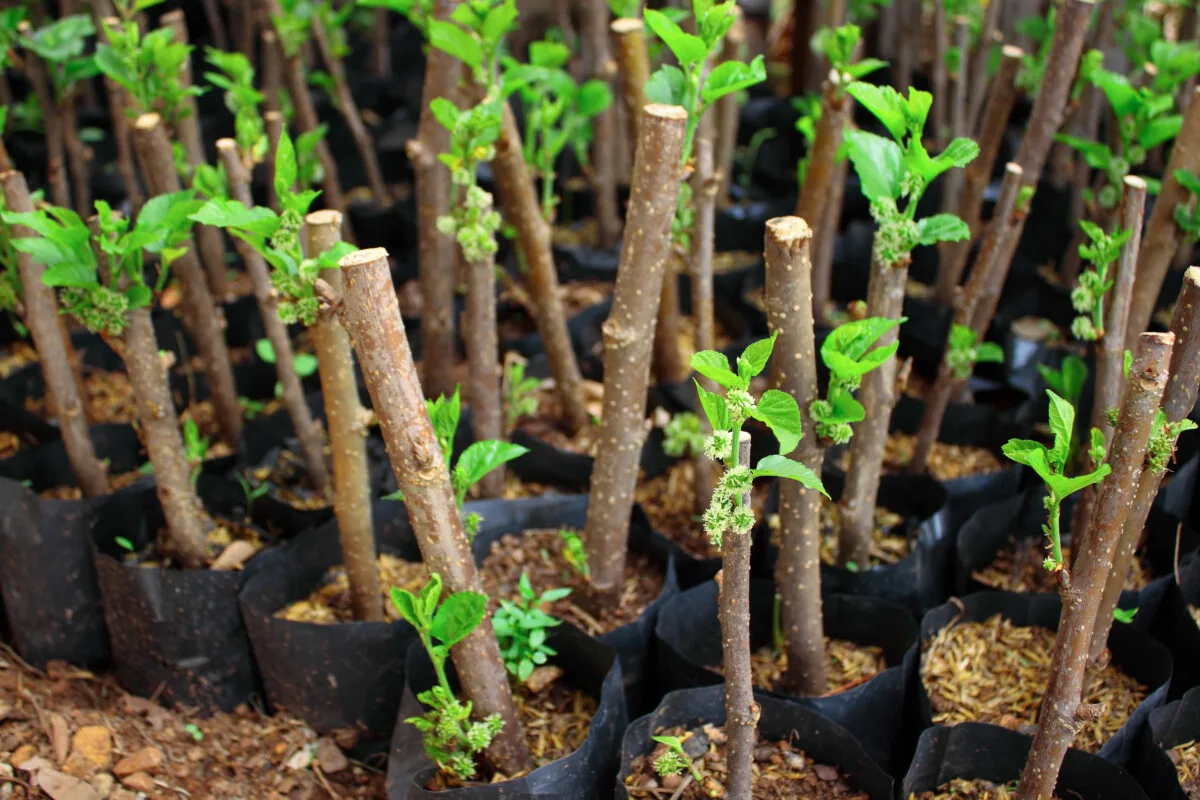
The large white mulberry (Morus alba) is native to northern China, and it’s a stunning tree. We had a single specimen on our homestead in Ópusztaszer, Hungary, that reliably dropped delicious fruit every summer.
It was a 40-foot-tall one, growing girthier and taller with each passing year, till at one point, we needed to cut out the main leader and trim the limbs back to a more manageable and safe size.
In the States, the white mulberry is considered an invasive (though naturalized) tree and is said to out-compete the red mulberry (Morus rubra), which is native to the states.
When considering where to plant a mulberry, you need to keep in mind: as above, so below. If you see a lot of quick growth on top, it’ll be there unseen in the soil too. For that reason, be sure to plant away from foundations, septic systems and sewage lines.
Keeping height in mind, this will vary with different cultivars. Mulberries are deciduous trees that can grow to a height of 30-60′ (9-18 meters) tall and 20-40′ (6-12 meters) wide.
If it’s a fast-growing tree you are looking for, which is more than a privacy screen, keep a fruiting mulberry in mind.
2. Mulberries start producing fruit at a young age.
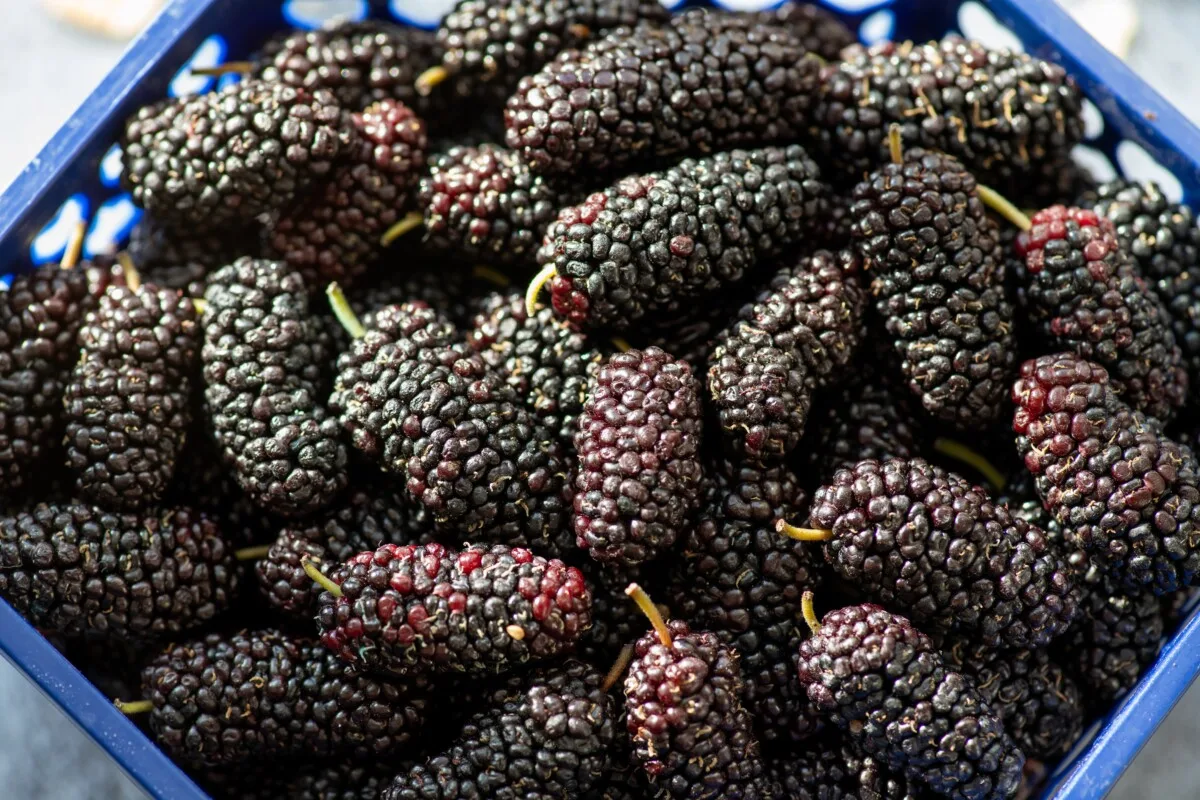
When you start a mulberry tree from seed, it may take 8-10 years to bear fruit. Considering the tree will outlive you, that’s not too long to wait.
The lifespan for a black mulberry (Morus nigra) is 500 to 1,000 years, whereas a white mulberry can live up to 250 years, according to some sources.
But, mulberry trees are dioecious. All that means is that some trees are male, and others are female. If you choose to start a mulberry from seed, you better start many since you won’t know for several years whether they will flower or not.
Also, when you grow mulberries from seeds, the quality of the fruit you end up with is questionable. Will it be sweeter than its parent or smaller? It’s probably not something you want to waste time with.
For a faster berry crop, consider growing a mulberry from cuttings or graftings instead. A grafted mulberry will flower and fruit in its first or second year of creation.
Mulberries can be eaten raw, made into jams or dehydrated.

Before we move any further, yes, mulberries can be eaten straight from the tree. In addition to that white mulberry on our homestead, we also had a black variety and a reddish one. They all had a slightly different flavor and level of acidity that offered to be eaten in various ways.
Our absolute favorite way to preserve white mulberries is to dehydrate them. All you need is the heat of the sun to accomplish this. Collecting them, however, is another story.
We’ve tried using nets to collect the berries fresh every morning, though what worked best was to put a layer of hay on the ground and hand-pick each fruit in a systematic fashion, so as not to smush the overly ripe fruits. It takes work, but it’s definitely worth it in winter to enjoy a handful of crunchy berries.
The black mulberries were canned into jams and made into syrups for pouring over ice cream.
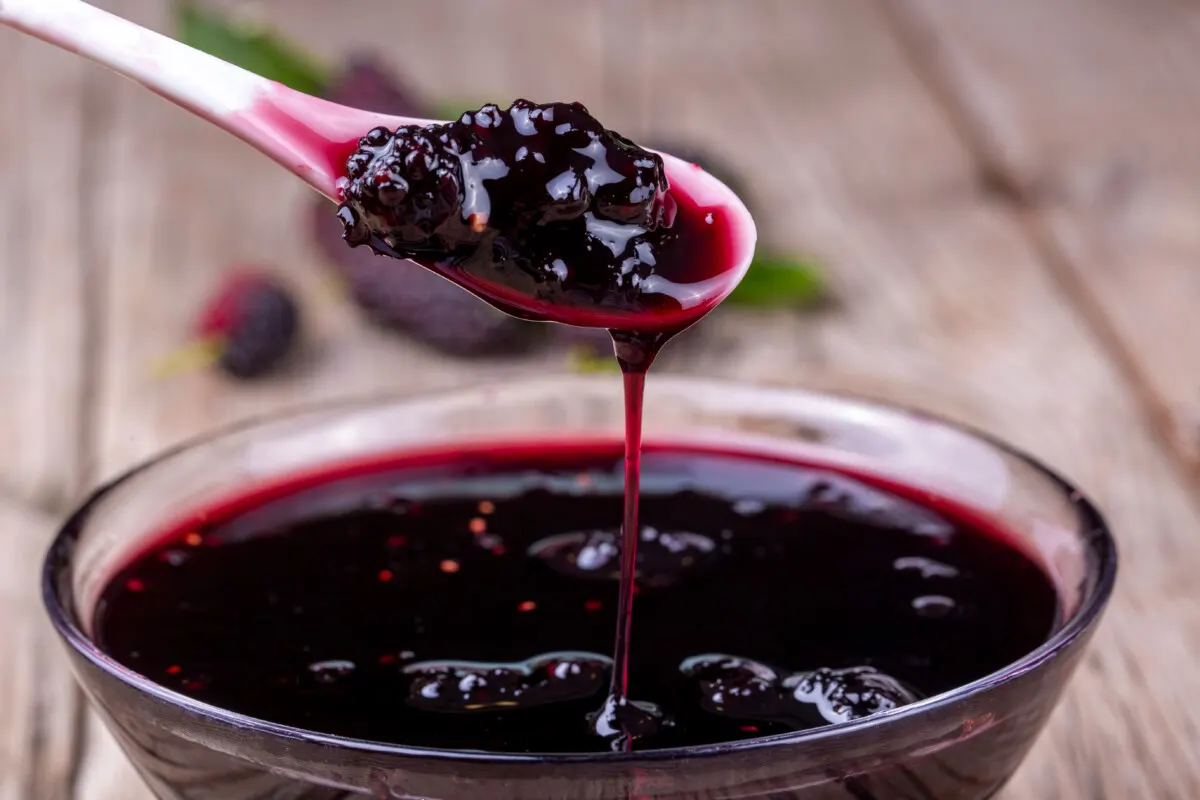
If you have multiple mulberry trees, it’s a delicious season to enjoy, as the harvests often overlap.
Mulberries can be used in:
If that’s not reason enough to plant a tree, let’s move on to a few more benefits.
3. Essential vitamins and minerals in mulberries.
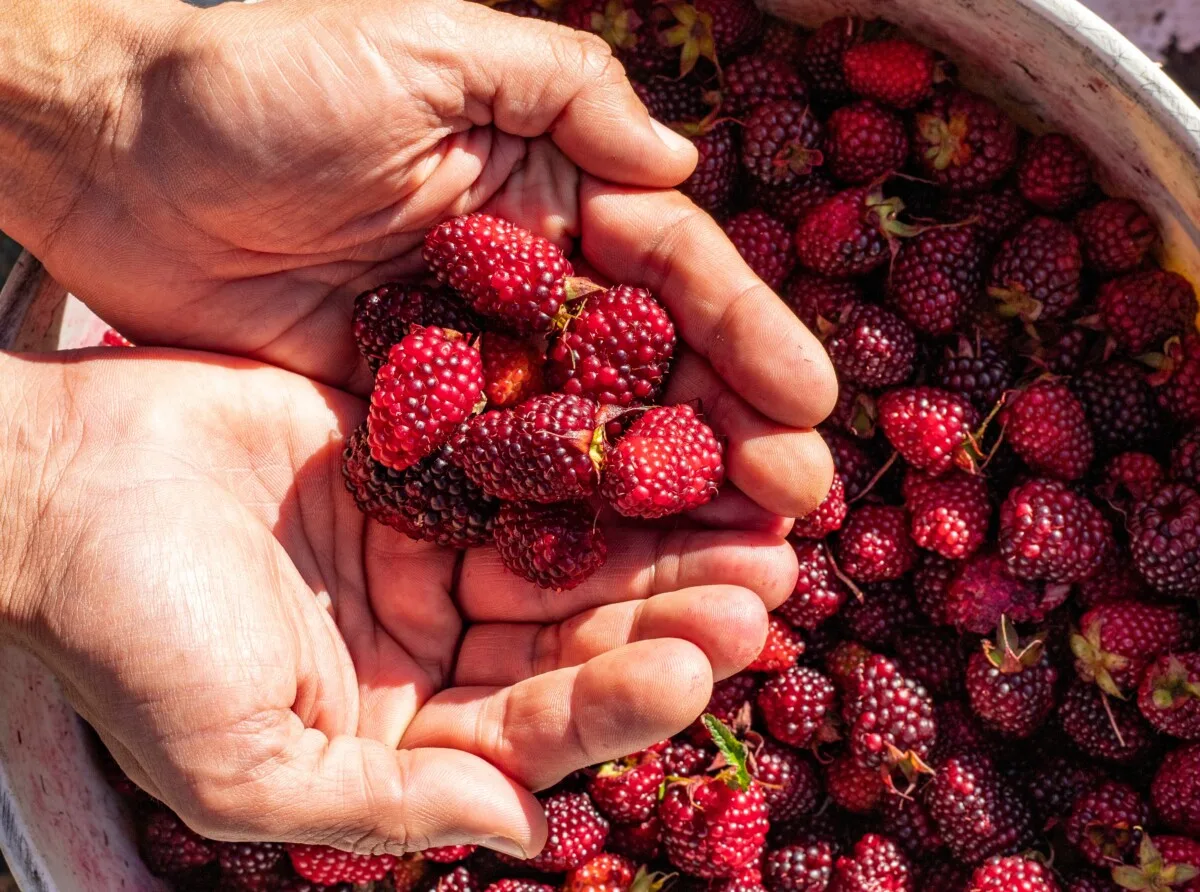
Mulberries are little powerhouses of succulent goodness. They are rich in phytonutrients, antioxidants, anthocyanins, and even zeaxanthin which is bound to help your eyes.
Simply put, they are supporting your body with iron, vitamins C, A and E, as well as B-complex vitamins.
I’d consider them a nutrient-dense fruit that grows no matter what the weather. Plus, they’re easy to preserve too.
4. Mulberries generally aren’t found in grocery stores.
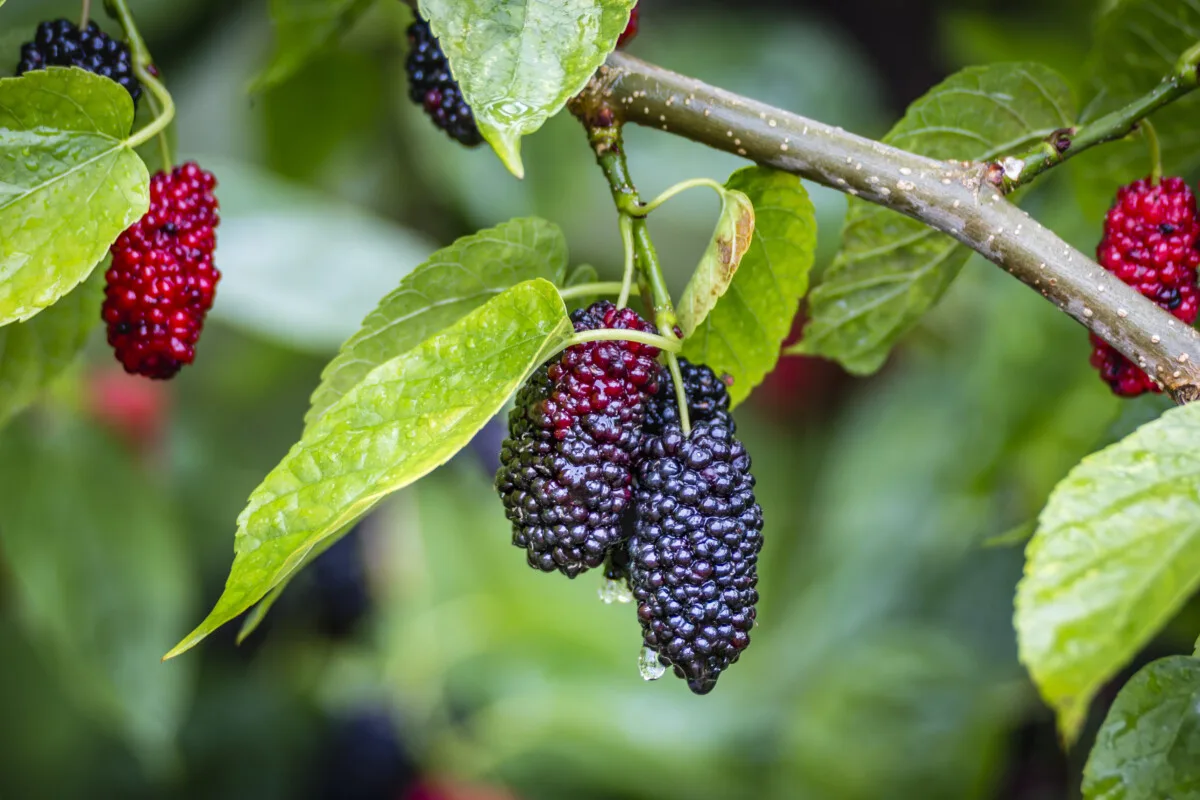
You won’t often find mulberries in the store for a couple of reasons: first, they have a short shelf-life – and are best eaten or preserved the same day they are harvested. Secondly, harvesting isn’t always easy. It all depends on the height of the tree.
Because our white mulberry was already a giant with a few lower branches, we had to be content with what fell to the ground when ripe.
The black mulberries we could easily pick enough from the lowest hanging branches. Sometimes we used a ladder, climbed the tree or took a stool for extra reach.
The key to all of this is self-reliance. Being able to harvest and process food on your own may one day be one of the best survival skills you have. Even if you don’t have your own mulberry tree, you can always forage for the fruit – if you know how to identify and find it.
5. Mulberry leaves are edible.
Elizabeth has an informative article titled: 10 Trees With Edible Leaves to Forage or Grow. You’ll find mulberry listed there. Don’t be mistaken; we’re not only talking about the leaves to be eaten by silkworms.
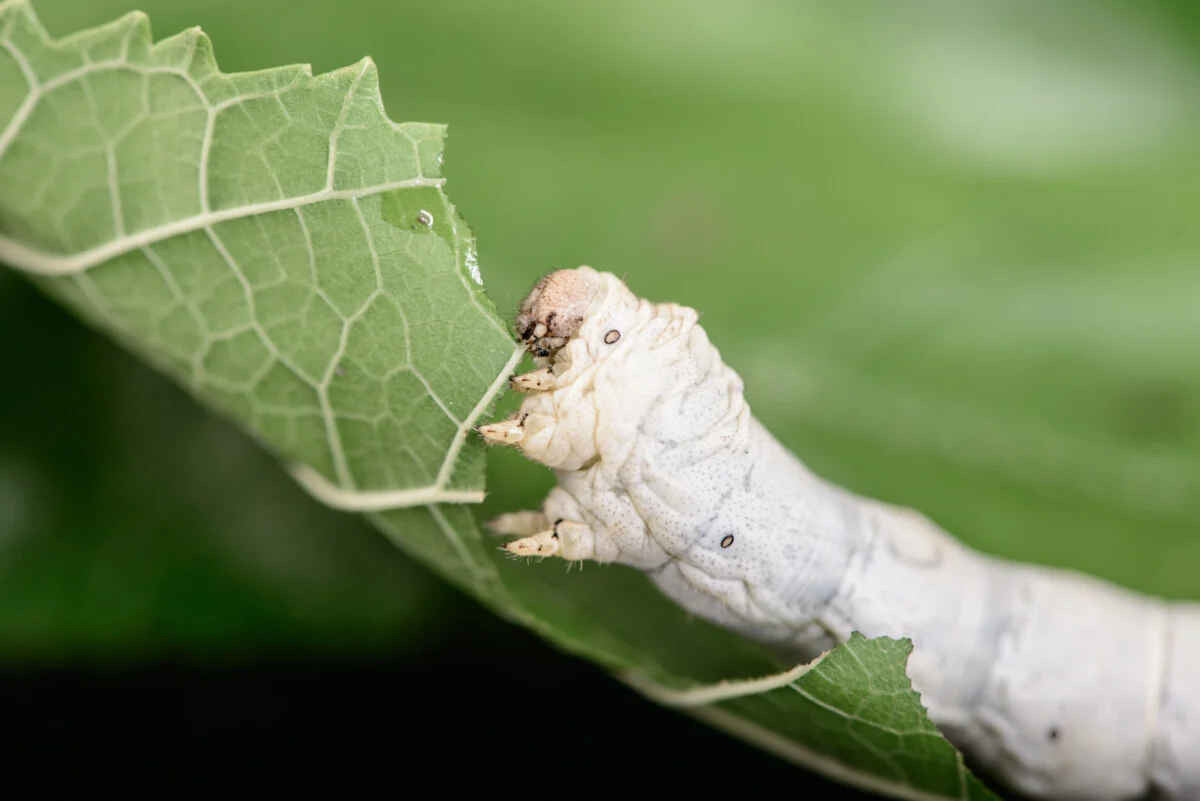
The leaves are there for human consumption too. Boiled in tea, used for stuffing, or even chopped up in your scrambled eggs.
Mulberry leaves can also be dried, ground and added to a flour mix for additional nutrients in your diet, just as one might use acorn flour.
Once you learn to identify mulberry leaves (they are all edible, no matter what species you find), you’ll discover a new-to-you survival food that can be foraged each spring and summer. Here’s a picking tip for you: pick them before the berries are ripe.
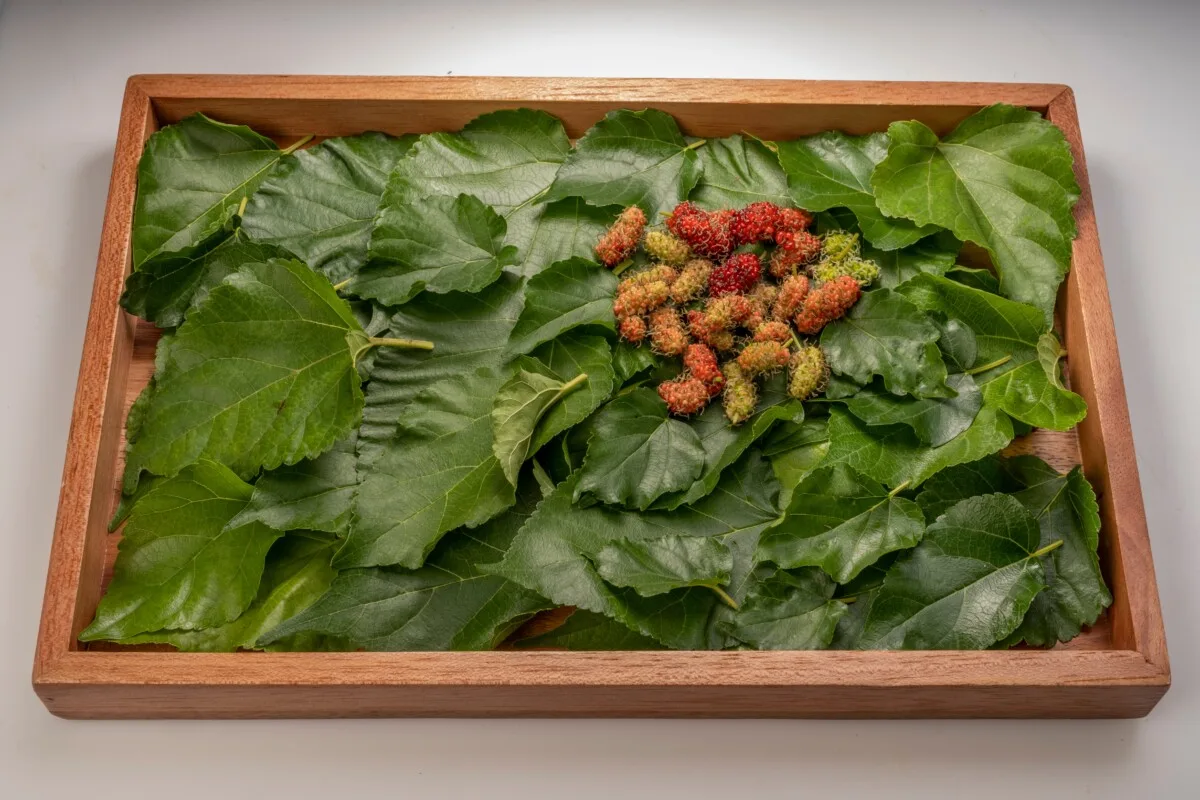
6. The fruit of purple mulberries acts as a dye or temporary paint.
As you keep digging for more information, you’ll find that mulberries have a lot of hidden uses. Mulberry leaves or a mulberry leaf extract can be used as a dyestuff – it presents itself in the form of a beautiful green color.
In our experience, although the berry juice is very colorful, it doesn’t last long on fabrics. At least, not without mordants. When our daughter was young, she loved to play with the freshly squeezed berry juice, using it to paint whatever came to mind.
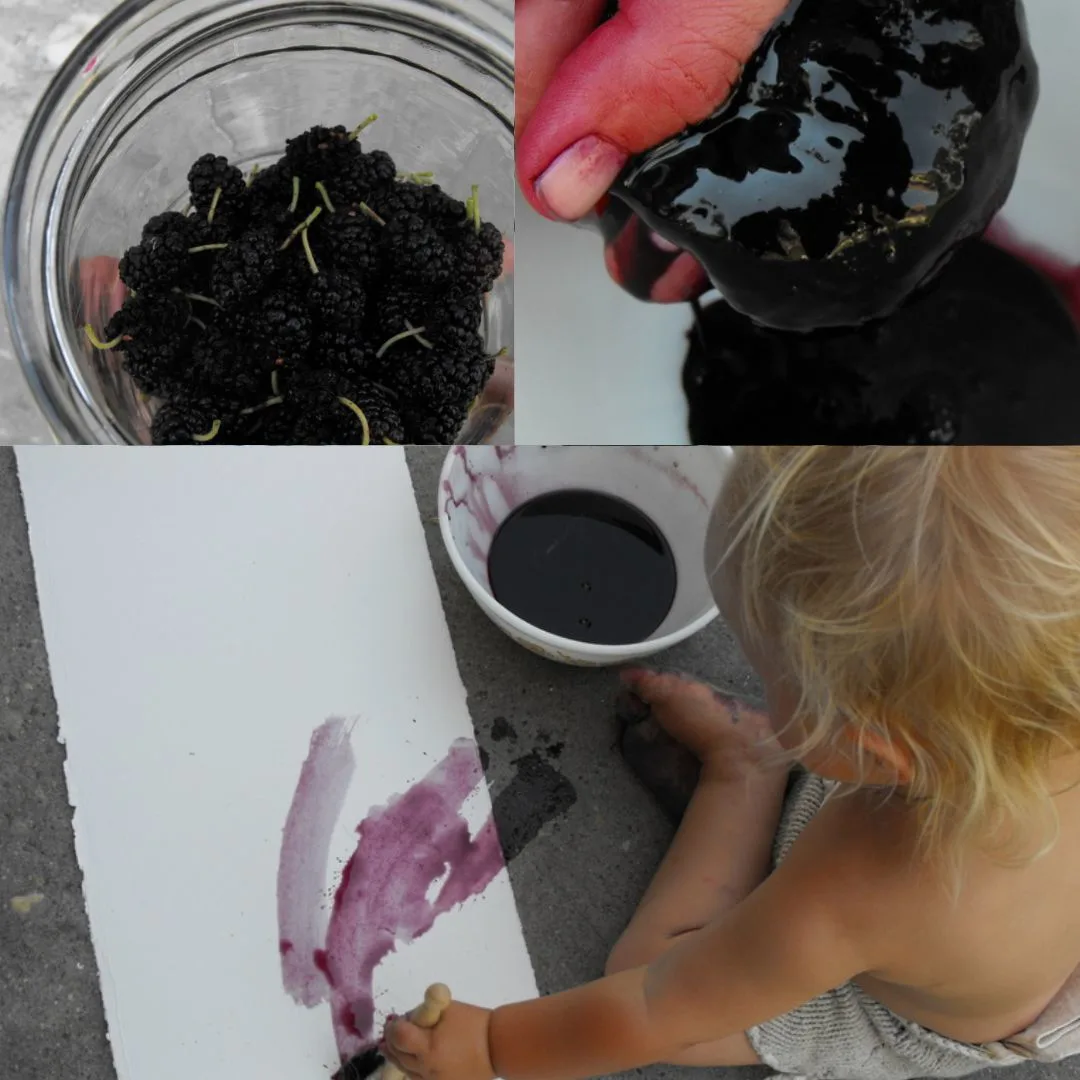
As a side note: you could drink this mulberry juice or add some washed berries to a smoothie. Even add the juice or berries to homemade frozen popsicles.
You can also make a purple homemade mulberry playdough out of the ripe berries.
7. Mulberry can be a great source of firewood with proper seasoning.
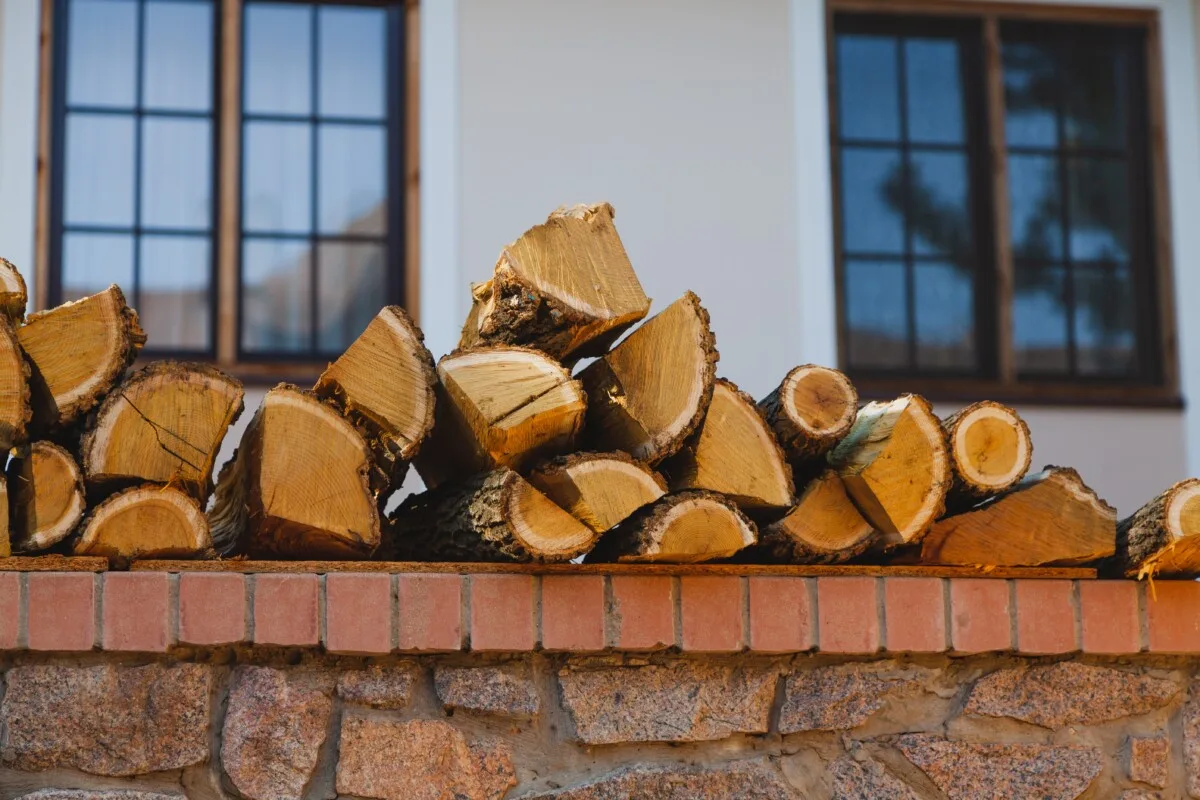
If you’re lucky enough to have room in your yard for a large mulberry tree, from time to time, you will need to trim some branches. With time, these can become a source of kindling.
In the event of having an existing giant on your land, when the time is right, it may be needed as firewood.
Of course, it’s how you season it that will make all the difference in the way it burns. Mulberry wood should be seasoned for even longer than oak, at least 12 months. If you can leave it longer, even up to two years, you’ll get an even hotter deal.
Because of mulberry’s high moisture content, it’s a wood that produces substantial smoke.
While you won’t want improperly seasoned wood in your fireplace, it’s good for your smoker. Or your friend’s smoker. In other words, mulberry is excellent for smoking meat. So, if you raise your own animals, you’re in for yet another treat.
8. Using mulberry for smoking meat.
Have you ever had meat smoked with mulberry shavings? Nope, me either. Though I would definitely try it if some tasty bites ever came my way.
I read it somewhere that mulberry wood pairs well with rabbit, poultry and fish. It’s definitely worth a try, especially if you raise any of those animals on your land.
But here’s a case where mulberries aren’t the same. In choosing wood for smoking, you’ll only want to cut down wood from a fruit-bearing (female) tree.
To get that mild, sweet flavor, season your wood as above and make sure it comes from a tree that produces fruit; otherwise, the flavor will be lost.
9. Mulberry wood is excellent for making barrels.
Barrel-making is quickly becoming a lost art, whether they be made out of oak or mulberry.
If you aren’t a master cooper yourself, it’s possible to learn a new skill via videos. In the case of that not happening, you could always hire the right person or buy a mulberry barrel online.
Storing your brandy in a mulberry barrel will take it to the next level.
10. Mulberry wood is highly valued in the furniture industry.
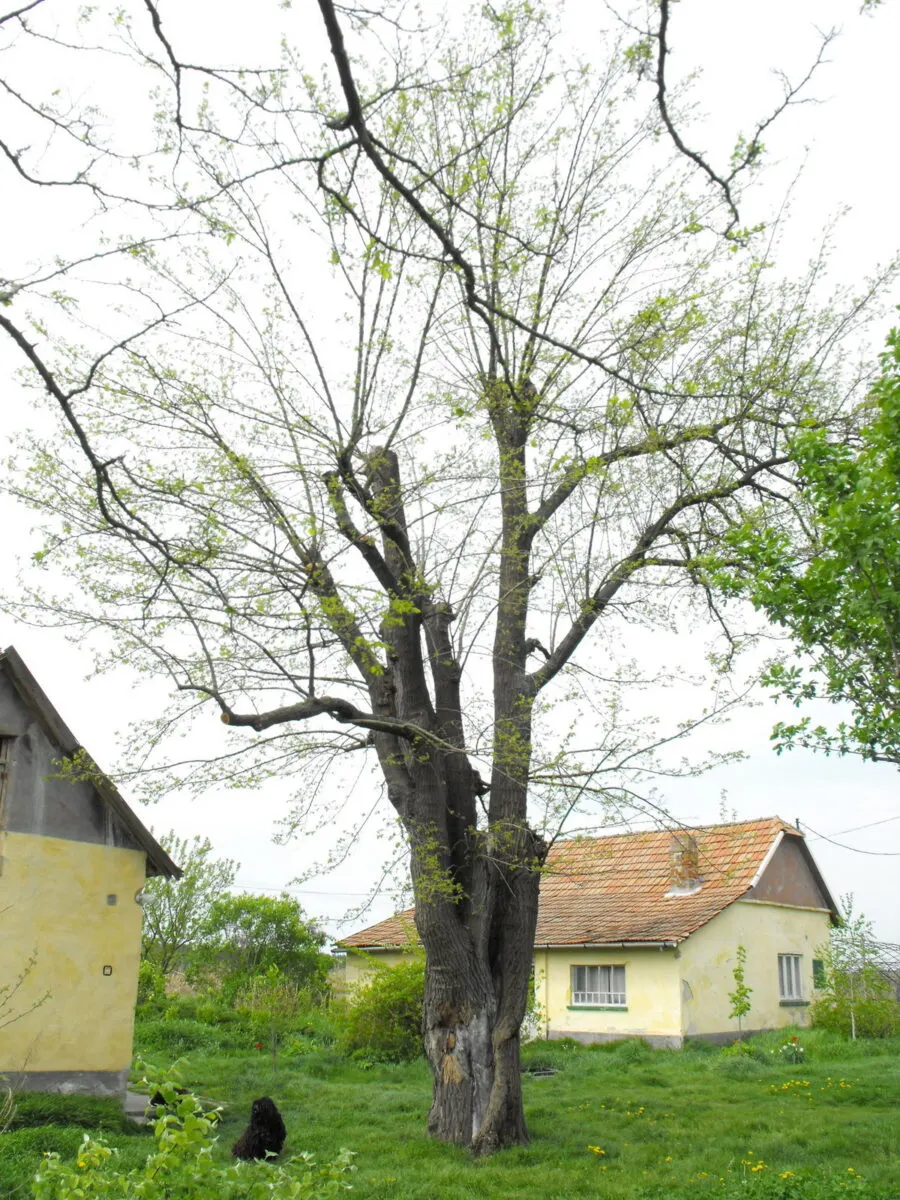
An easier project to tackle with wood from mulberry trees, provided you have the processing equipment, would be fence posts. The wood is very durable and insect resistant. If you were to purchase mulberry fence posts, alas, you’d be in for some sticker shock.
When you have it growing in your backyard, it won’t cost you a thing.
If it’s a large tree that needs to come down, know that aged mulberries can have quite thick trunks. In this case, you’ll get bigger, more valuable boards which can be turned into flooring or furniture.
11. Fodder for your homestead animals.
Our goats absolutely loved chowing down on fallen mulberries – and the leaves. If they could have found a way to climb the trees, they’d have been right up there in the branches. That is until the next tree or bush enticed them further.
Generally, it’s the wild animals that you’ll think of first when it comes to eating mulberries: foxes, squirrels, raccoons, opossums, crows, cardinals and other birds.
What about feeding your homestead animals? Who can help you enjoy the harvest?
Mulberries can be pollarded to keep the branches coming, at the same time keeping the bush or tree a more manageable size.
Since the leaves contain a significant amount of protein, they make a great supplement for your ruminating animals, as well as rabbits. Naturally, the berries will be gobbled up by your flock of poultry.
How to Care for Mulberry Trees
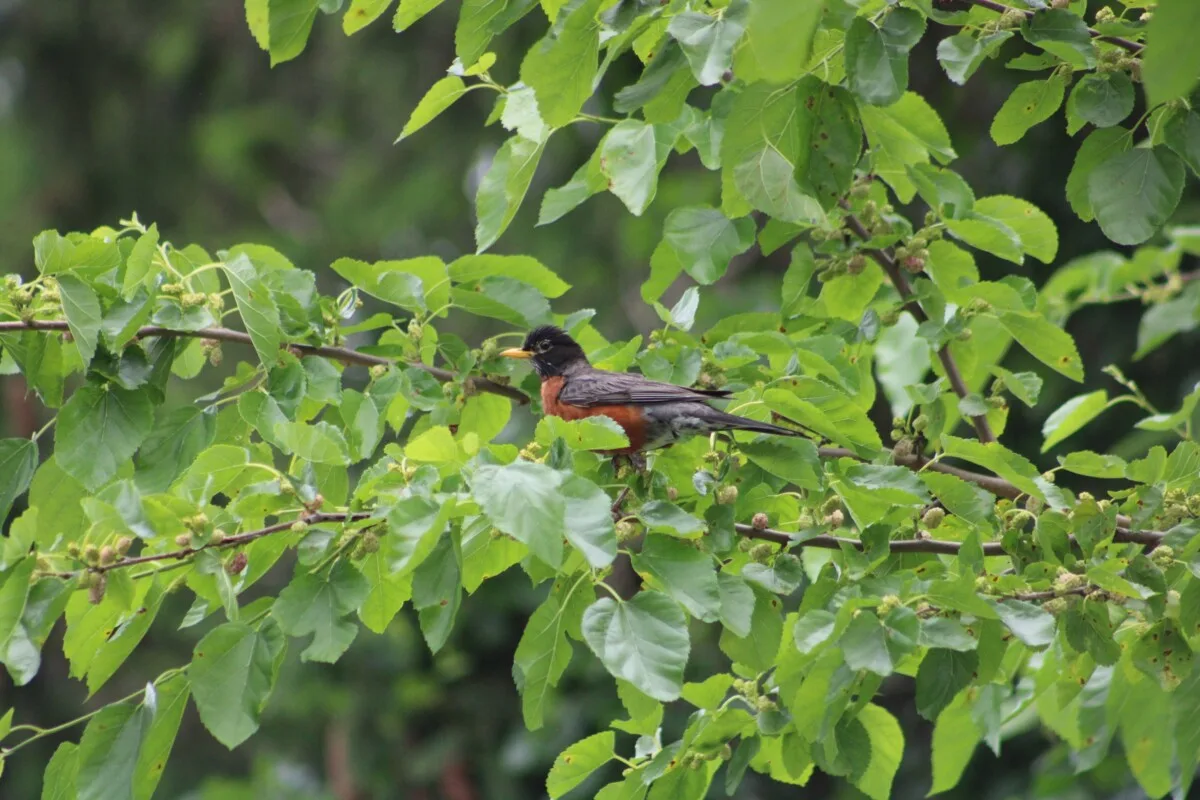
Now that you’ve picked a reason or two for growing mulberries on your property, the fun part comes next: choosing a variety and planting.
Choosing the Best Mulberry – Recommended Cultivars
Mulberry trees will give you a lot of fruit in return for giving them enough space to grow. That’s always been reason enough for us to keep them around.
Plus, there’s a benefit to having a fast-growing tree in your backyard, which is virtually disease- and pest-free.
While there are more than sixty species in the Morus genus, you won’t find all that many fruiting (or non-fruiting) cultivars at your local nursery.
Red Mulberry Varieties
Red mulberry (Morus rubra) trees are native to eastern North America. At maturity, red mulberries often reach heights of 35-50 feet and spread their branches 30-40 feet wide. Generally, they can be found growing in USDA hardiness zones 4-8.
It’s difficult to find a true red mulberry online. Your best chances of finding one with good flavor is to forage for it out in the wild and take cuttings or graft some buds onto a quality rootstock.
You can also find some less “pure” varieties which have been hybridized from white mulberries, such as Illinois Everbearing Mulberry (Morus alba x rubra).
Here’s something of interest; if you are in search of native red mulberries in the States: there is a Worthy Red Mulberry contest from growingmulberry.org which aims to “…identify, preserve, and make available superior Morus rubra specimens.”
Contest rules and instructions can be found here; the contest has been extended to July 2023, but it’s worth keeping in contact with them if you have living trees in your neighborhood and wish to preserve the native species.
Black Mulberry Varieties
Black mulberries are native to southwest Asia, though they’ve been grown in Europe since Roman times.
Just to be clear, you can’t tell one mulberry tree from another by the color of the fruit alone. While black mulberries (probably the tastiest and juiciest of the three) are black in color, so are the red mulberries. Actually, red mulberries are usually a deep red, almost black.
As for white mulberries, their colors change from cream to pinkish to dark lavender and even black. Crazy, isn’t it? To distinguish between the red, black and white mulberries you’re going to have to take some more information from the leaves. And within that – the leaf variation!
Back to some black mulberry cultivars for you; there’s more to choose from this time around:
- Dwarf Everbearing Mulberry
- Mulberry ‘Trader’ (Morus nigra)
- Giant Sweet Southern Black Mulberry Tree
- Black Pakistan Mulberry
And finally, if the plant rebel in you still wants a white mulberry, you can find those for sale too.
If it’s the wood or grand shade you are after – and none of the mess – there are fruitless white mulberry trees out there as well.
How to Plant a Mulberry
As mentioned, most mulberries have a tendency to be on the larger side once mature. Be sure you have plenty of space for them in your yard, as they are stand-alone-specimen trees that don’t like to be crowded.
In finding the best spot to plant them, consider that mulberries prefer full sun, though they will tolerate partial shade. In the case of the latter, they will, however, produce fewer fruits. If it’s the fruit you’re after, be sure that you meet the full sun requirement.
As for preferred soil conditions, they aren’t the pickiest trees on the block. They do like rich, well-draining soil but are also forgiving in “poor” soils.
As mentioned earlier, avoid placing mulberry trees close to home, patios, driveways, septic systems, or anywhere near your laundry line. White sheets and red berries do not mix well. Unless you enjoy doing multiple loads of washing.
Plant mulberries in a spot where you’ll keep them for the long haul. Black mulberries live the longest of the three, reaching into the hundreds of years.
Once your mulberry becomes established in the soil, all you need to do is sit back, relax and let nature take over. Even irrigation may be in vain, as the trees are fairly drought-tolerant. Save that water for your garden crops.
Pruning a Mulberry Tree
How did I get to the end of the article and forget to sing, “All around the mulberry bush, the monkey chased the weasel…” I’m still not sure what that’s all about, but I do know that mulberries are trees, not bushes. So, be sure to prune them as such.
Mulberries don’t need a lot of pruning. When they are young, be careful to shape them, keeping multiple branches for easier harvesting.
Every two to three years, you can prune off a minimal amount of wood to control their size. This should be done in spring, when the tree is in dormancy, as mulberries have the tendency to weep from their cut ends.
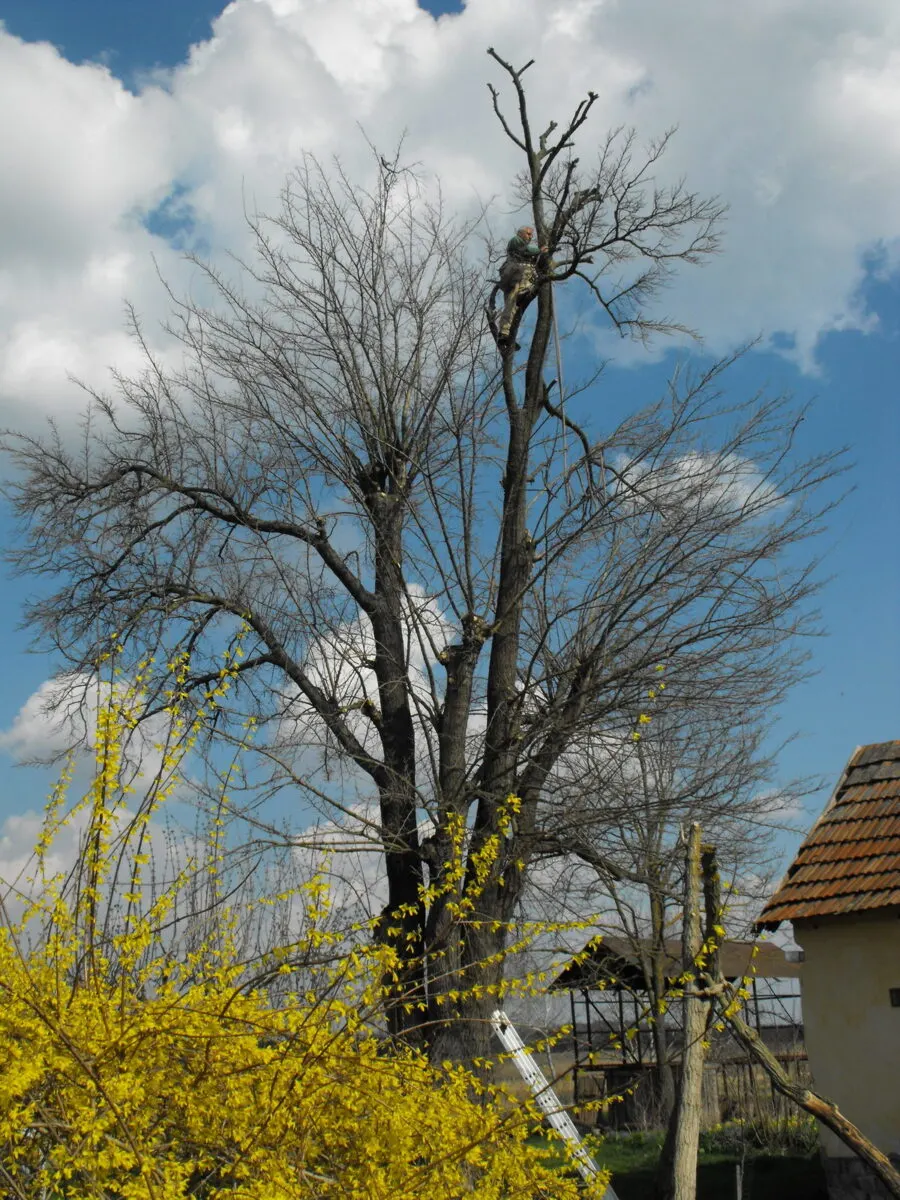
For the most part, you’ll only need to thin out dead or overcrowded branches. The tree trimmings can then be used in other ways.
With all this information in mind, are you team mulberry? Or will you still boo the next time you find them on the sidewalk?

Get the famous Rural Sprout newsletter delivered to your inbox.
Including Sunday ramblings from our editor, Tracey, as well as “What’s Up Wednesday” our roundup of what’s in season and new article updates and alerts.

